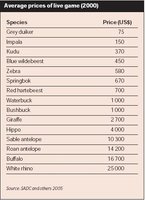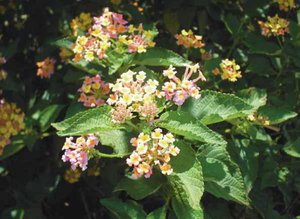Southern Africa and biodiversity conservation
Contents
- 1 Introduction Table 1: Biodiversity richness and endemism in Southern Africa (Source: Krug and others 2002) Southern Africa is a globally recognized centre of biodiversity (Southern Africa and biodiversity conservation) richness and endemism, as shown in Table 1. The Western Cape, the Karoo, and the Miombo woodlands are of particular significance. Biodiversity underpins the economy, including tourism. Southern Africa has placed increasing importance on conservation and sustainable use and has invested in several initiatives in support of those objectives, notably the transfer of ownership of biodiversity from the state to the private and community sectors as well as the development of transboundary parks.
- 2 Land uses for economic benefit and wildlife conservation
- 3 Challenges faced in protecting biodiversity and realizing development opportunities
- 4 Further reading
Introduction Table 1: Biodiversity richness and endemism in Southern Africa (Source: Krug and others 2002) Southern Africa is a globally recognized centre of biodiversity (Southern Africa and biodiversity conservation) richness and endemism, as shown in Table 1. The Western Cape, the Karoo, and the Miombo woodlands are of particular significance. Biodiversity underpins the economy, including tourism. Southern Africa has placed increasing importance on conservation and sustainable use and has invested in several initiatives in support of those objectives, notably the transfer of ownership of biodiversity from the state to the private and community sectors as well as the development of transboundary parks.
The current condition and trend of biodiversity has recently been assessed as part of the Millennium Ecosystem Assessment (MA): averaged across all terrestrial species of plants and vertebrates, it is estimated that about 84 percent of the pre-colonial populations of wild organisms persisted in the year 2000. The rate of decline in “biodiversity intactness” was about 0.8 percent per year for the 1990s. Most of the organisms that persist occur outside the comprehensive and generally well-run system of protected areas. The various species of fauna and flora found in the vast range of terrestrial, freshwater and marine ecosystems are an important source of food, medicines, research and regional integration through transboundary conservation. They are also an important source of income for communities through community-based natural resource management (CBNRM) programmes.
 The coelacanth, a 400 million year-old 'living fossil' fish, occurs in the waters of the WIO islands.
The coelacanth, a 400 million year-old 'living fossil' fish, occurs in the waters of the WIO islands.(Source: Estate of J. Metzner/Still Pictures)
Land uses for economic benefit and wildlife conservation
Land-use systems that are based on wildlife utilization are more ecologically sustainable than other uses. For example, wildlife makes better use of vegetation compared to livestock, and has many marketable uses in addition to meat production. Income from wildlife is significant. One of Southern Africa’s most prestigious and largest wildlife auctions for live game is organized by the KwaZulu Natal Conservation Service in South Africa. Excess animals from public parks are sold to private wildlife areas predominantly in Southern Africa. Table 2 provides average auction prices for live game in 2000, during which the prices ranged from US$75 for a grey duiker to US$25,000 for a white rhino. Safari hunting is the main income generating form of consumptive wildlife utilization. However, the most common and widespread use of wildlife is nonconsumptive tourism, which takes place in areas where densities of wildlife are high.
Since the 1970s, several initiatives in Mozambique, Namibia, South Africa, and Zimbabwe have transferred use rights and responsibilities to the landholders. In most Southern African countries, wildlife historically belonged to the government and not to the people who owned or lived on the land. Thus there was little incentive for landholders to conserve or enhance wildlife stocks. In Zimbabwe, the Communal Areas Management Programme for Indigenous Resources (CAMPFIRE) programme targeted sparsely populated communal land adjacent to national parks or hunting areas. It demonstrated that economic returns from sustainable use of wildlife (largely through trophy hunting) exceeded the returns from marginal cultivation or cattle ranching, and schemes were devised to return the proceeds of wildlife utilization to the local communities. In South Africa, a simple change in the provincial wildlife protection legislation lifted many of the restrictions relating to the use of wildlife for those landholders who erected a game-proof fence around their land. Large parts of the country that had been used unprofitably for livestock ranching rapidly began to farm wildlife, initially for the trophy hunting market and later for the wildlife tourism market. In Namibia, many experiments in CBNRM have been launched, and several have proven sustainable for long periods.
Transboundary parks have been a “peace dividend” following the achievement of political stability in Southern Africa. Established examples include the Greater Limpopo Transfrontier Park initiative between Mozambique and South Africa, the Kgalagadi Agreement establishing a park between South Africa and Botswana, and the Tuli Park between South Africa, Botswana and Zimbabwe. Several more are in advanced stages of implementation. While many of the drivers and benefits of transboundary protected areas are political and economic, there are also significant biodiversity advantages: large parks have lower operational costs; bigger wildlife populations are less prone to loss when conditions fluctuate; and ecosystems seldom follow national jurisdictions.
Challenges faced in protecting biodiversity and realizing development opportunities
Given that the biodiversity of Southern Africa is remarkably intact, the most immediate challenge is to avoid degradation of habitat in the extensive areas that are used for activities such as livestock ranching, while simultaneously maintaining viable livelihoods for the people who live in these areas.
The invasion of ecosystems by alien species has caused significant economic losses. Such species have been deliberately or accidentally introduced by humans. Only a fraction of such introductions become problem species, but when they do the consequences can be severe for local biodiversity, ecosystem services and human well-being. For instance, it has been calculated that the additional water use by alien trees in South Africa (excluding those in plantations and orchards) is between 1,400 and 3,300 million m3/year. The article Invasive alien species in Africa looks at these issues more closely.
Climate change is also emerging as a major threat to biodiversity in Southern Africa, with some symptoms already manifest. While extreme climate variation is not new, the magnitude and rapidity of climate change likely to occur in the 21st century is greater than the capacity of many organisms to respond by adaptation or migration. Migration to areas with a suitable climate is severely hampered by barriers such as roads, fences, urban areas and cultivated fields. The highly diverse and unique succulent flora of the winter-rainfall regions in the southwest of Africa is projected to be particularly threatened, and emerging evidence suggests the effects of climate change are already apparent.
Further reading
- Biggs, R., et al., 2004. Nature supporting people: The Southern African Millennium Ecosystem Assessment. CSIR, Pretoria, South Africa.
- Burgess, N., D’Amico Hales, J., Underwood, E., and Dinerstein, E., 2004. Terrestrial Ecoregions of Africa and Madagascar: A Conservation Assessment. Island Press, Washington.
- Foden, W., Midgley, G.F., Bond, W.J. and Bishop, J., 2003. Population declines of Aloe dichotoma (Kokerboom) – revealing early impacts of climate change. Proceedings of the National Symposium on Global Change and Regional Sustainability in South Africa, Kistenbosch, Cape Town, 27-29 October.
- Görgens, A.H.M. and van Wilgen, B.W., 2004. Invasive alien plants and water resources in South Africa: current understanding, predictive ability and research challenges. South African Journal of Science. 100, 27-33.
- Krug, W., Suich, H., and Haimbodi, N., 2002. Park pricing and economic efficiency in Namibia. DEA Research Discussion Paper, No. 45. Directorate of Environmental Affairs / Ministry of Environment and Tourism, Windhoek.
- Mohamed-Katerere, J.C., 2001. Review of the Legal and Policy Framework for Transboundary Natural Resource Management in Southern Africa. Paper No 3, IUCN-ROSA Series on Transboundary Natural Resource Management. IUCN – The World Conservation Union, Harare.
- Rutherford, M.C., et al., 1999. Plant Biodiversity. In Climate Change Impacts in Southern Africa (ed. Kiker, G.). Department of Environment Affairs and Tourism, Pretoria.
- SADC, IUCN and SARDC, 2005. Southern African Environment Outlook 2005. Southern African Development Community, IUCN – the World Conservation Union and Southern African Research and Documentation Centre, Gaborone/Harare.
- Scholes, R.J. and Biggs, R., eds. 2004. Ecosystem Services in Southern Africa: a regional assessment. Council for Scientific and Industrial Research, Pretoria.
- Scholes, R.J. and Biggs, R., 2005. A biodiversity intactness index. Nature. 434, 45-9. Available for download.
- UNEP, 2006. Africa Environment Outlook 2.
|
|
| Disclaimer: This article is taken wholly from, or contains information that was originally published by, the United Nations Environment Programme. Topic editors and authors for the Encyclopedia of Earth may have edited its content or added new information. The use of information from the United Nations Environment Programme should not be construed as support for or endorsement by that organization for any new information added by EoE personnel, or for any editing of the original content. |

